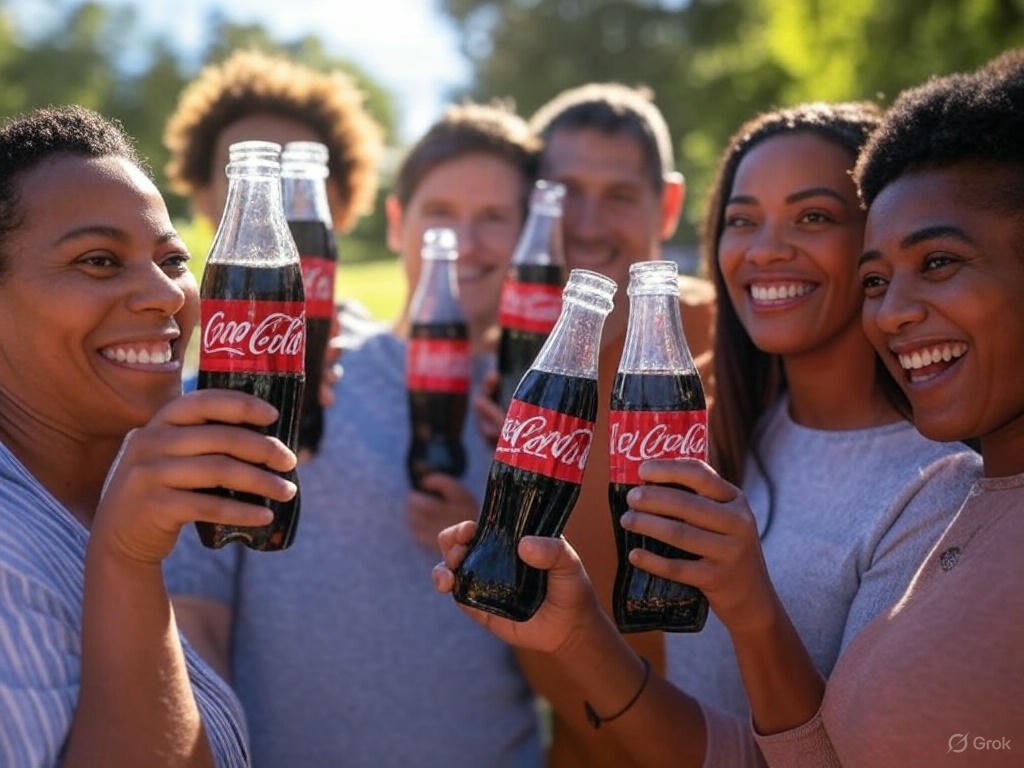Coca-Cola is not just a soft drink; it is an emotion. For decades, the brand has built its identity around happiness, togetherness, and positivity. Instead of focusing solely on taste or ingredients, Coca-Cola’s Happiness Marketing Strategy revolves around creating joyful moments that resonate with consumers worldwide. This approach has helped Coca-Cola maintain its status as one of the most beloved and recognizable brands in the world.
🎯 The Strategy: Selling Happiness, Not Just a Drink
Coca-Cola’s marketing isn’t about carbonated beverages—it’s about spreading joy. Through carefully crafted campaigns, the brand connects with people on an emotional level, reinforcing the idea that Coke is more than just a drink—it’s an experience.
The key aspects of Coca-Cola’s happiness marketing include:
🔶 Storytelling: Advertisements often showcase real-life happy moments, like family gatherings, friendships, and celebrations.
🔶 Emotional Connections: Campaigns focus on themes of love, unity, and joy, making consumers feel good when they see Coca-Cola ads.
🔶 Global Unity: Slogans like “Open Happiness” and “Taste the Feeling” emphasize that Coke is a universal symbol of happiness.
🎯 Why Happiness Marketing Works for Coca-Cola
Coca-Cola understands that consumers don’t just buy products—they buy feelings and experiences. The brand’s happiness-driven strategy works by:
🔶 Creating Positive Associations: Coca-Cola’s ads make people associate the drink with happy memories and emotions.
🔶 Encouraging Brand Loyalty: Customers feel emotionally connected to the brand, making them more likely to choose Coke over competitors.
🔶 Driving Social Engagement: Coca-Cola’s uplifting campaigns are widely shared on social media, increasing brand reach and visibility.
🎯 The Impact of Coca-Cola’s Happiness Marketing Strategy
By consistently delivering positive, emotional messaging, Coca-Cola has established itself as more than just a beverage company. Whether it’s through the “Share a Coke” campaign or heartwarming holiday commercials, the brand continues to win hearts worldwide.
🎯 Lessons for Other Brands
Coca-Cola’s success offers valuable insights for brands looking to build emotional connections with consumers:
🔶 Sell an experience, not just a product. Consumers are drawn to brands that evoke strong emotions.
🔶 Use positive messaging. Associating your brand with joy, unity, and love increases its appeal.
🔶 Engage on a personal level. Campaigns like “Share a Coke” personalize the brand experience for consumers.
👍 Final Thoughts
Coca-Cola’s happiness marketing strategy proves that branding is about more than just selling—it’s about creating emotions and memories. By focusing on positivity, connection, and shared experiences, Coca-Cola has built one of the most successful marketing approaches in history.
This strategy not only drives sales but also fosters a lasting relationship with consumers around the world. Would you use happiness marketing in your brand strategy? Let us know in the comments below!


Leave A Comment